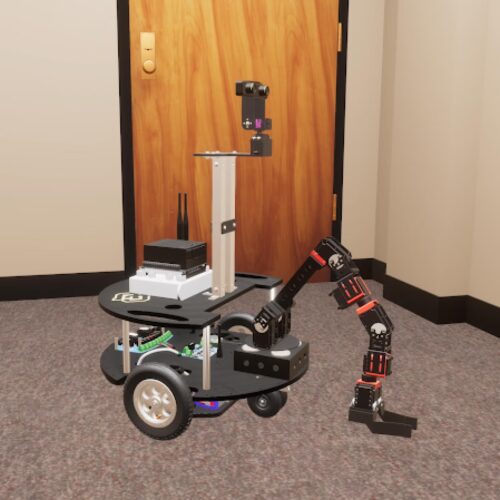The project uses virtual reality to help people on Earth practice controlling robots for Moon missions by simulating tasks and conditions in a lab.

Researchers at CU Boulder are exploring how virtual reality (VR) can train people on Earth to control robots on the Moon—without ever leaving campus. In experiments using a small, three-wheeled robot called “Armstrong,” researchers found that participants who trained in a VR simulation completed tasks faster and with less stress than those who didn’t.
The study shows that digital twins—realistic virtual versions of real-world robots and environments—can help mission operators prepare for lunar conditions. In testing conducted in 2023 and 2024, volunteers used VR headsets to remotely operate Armstrong, picking up and placing plastic blocks that stood in for antennas meant for a future Moon-based observatory.
Half the participants trained first in the VR version of the lab. They were 28% quicker on average than those who went in cold and also reported feeling more comfortable with the task. The simulation, created using the Unity game engine, even mimicked the robot’s speed and behavior.
The robot Armstrong operates in a quiet, windowless lab far from the Moon’s harsh terrain, but the work being done there is laying a foundation for future missions. Though Armstrong wouldn’t survive on the Moon itself, its digital counterpart could help human-robot teams prepare to build lunar research bases and long-term habitats.
With the initial study complete, the team is now turning its attention to a more complex challenge: simulating the Moon’s surface environment. They are developing a virtual model of a lunar rover using the same game engine that powered their earlier digital lab. This next phase involves collaboration with a space technology company and focuses heavily on accurately replicating lunar dust behavior.
Simulating lunar dust has proven particularly difficult. As the rover drives, its wheels would kick up fine particles that could interfere with sensors and cameras. But with no easy way to observe dust dynamics on the Moon directly, developers must rely on limited data and creative modeling to simulate this key environmental factor.
Despite these challenges, the project continues to offer students a meaningful role in shaping the tools and training methods that may support future Moon missions—all from a campus lab.







